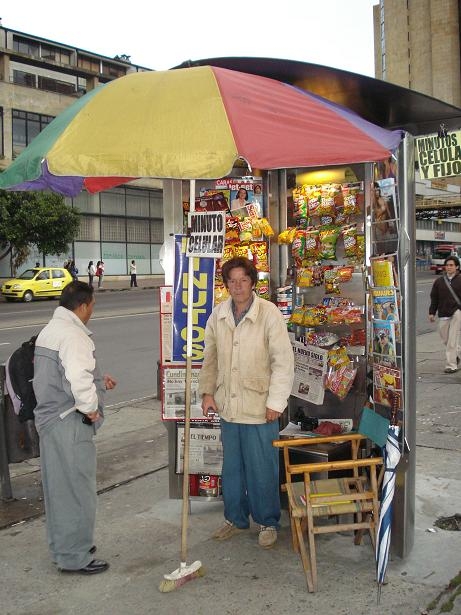15 Entrepreneurs from South Africa, Colombia, and Mexico selected at Cape Town ISP
November 19th, 2010 — Justin Belmont
Endeavor invited 15 High-Impact Entrepreneurs from South Africa, Colombia, and Mexico to join its network at its 37th International Selection Panel held in Cape Town, South Africa November 17-19. Endeavor now supports 555 High-Impact Entrepreneurs from 358 companies.
The newest Entrepreneurs were selected by top business leaders from the United States, Europe, and South Africa. In addition to the selection panel, on November 17th participants attended the 2nd annual Global Entrepreneurship Week summit “The State of Entrepreneurship in South Africa.”
This was Endeavor’s sixth selection panel in South Africa since establishing the office in 2004. Endeavor South Africa brought 11 candidates from six companies, out of which six Entrepreneurs were selected. The affiliate’s increased search and selection capabilities, particularly among entrepreneurs from previously disadvantaged groups, have been supported in part by a grant from the Citi Foundation. Citi has also provided support for 2010/2011 Endeavor search and selection activities in Egypt and Turkey. Learn more about the Search & Selection process here.
The companies/Entrepreneurs selected are:
Campoalto (Colombia)
Entrepreneurs: Andrés Angulo, Alvaro Hoffmann, Hugo Fernando Novoa
Entrepreneurs: Andrés Angulo, Alvaro Hoffmann, Hugo Fernando Novoa
Campoalto is an education company that operates 16 career certification programs at five “campus” locations in Bogotá. Programs cover offerings in the Health Care sector and, more recently, Hotel Management and Food Services.
Cibecs (South Africa)
Entrepreneur: Richard Dewing
Entrepreneur: Richard Dewing
Founded in 2004, Cibecs provides enterprise-wide, centrally managed, automated and secure data protection and recovery services for desktops and notebooks. Its product, Cibecs Continuity, allows clients to easily and quickly recover lost data, reducing infrastructure utilization and optimizing bandwidth and storage usage.
Cinemagic (Mexico)
Entrepreneurs: Roberto Quintero Vega & José Irigoyen Palacios
Entrepreneurs: Roberto Quintero Vega & José Irigoyen Palacios
Cinemagic builds and manages high-tech, modern movie complexes in regional Mexican cities with populations of 50,000-150,000.
Integr8 (South Africa)
Entrepreneurs: Lance Fanaroff and Rob Sussman
Entrepreneurs: Lance Fanaroff and Rob Sussman
Integr8 IT is now the largest privately owned Information, Communications and Technology (ICT) Company on the African continent. It currently supports and regulates the ICT environment of many of South Africa’s leading organizations including Microsoft South Africa, Ernst & Young and Nedbank.
Masana (South Africa)
Entrepreneur: Cynthia Mkhombo
Entrepreneur: Cynthia Mkhombo
Masana Hygiene Services provides office cleaning programs for clients in a full range of corporate, retail and commercial sectors. In six years, Masana has grown from 7 to over 750 employees, the majority of whom are women.
Neve Gelato (Mexico)
Entrepreneur: Francisco Xavier Briseno Sanchez
Entrepreneur: Francisco Xavier Briseno Sanchez
Founded in 1999 as Mexico’s first Italian-style ice cream chain, Neve Gelato has built its brand name and retail presence in Mexico City, currently operating 26 shops, and has plans for major expansion throughout the country.
Pabisan (Mexico)
Entrepreneur: Enrique Antonio Ramon Eisenring
Entrepreneur: Enrique Antonio Ramon Eisenring
Puebla-based Pabisan produces specialty bakery products such as low-sugar and gluten-free bread. Its business lines now span several markets to include a high-end retail bakery franchise, wholesale production for leading domestic supermarkets and exports to American supermarkets.
PagosOnline (Colombia)
Entrepreneurs: Jose Fernando Velez and Martin Schrimpff
Entrepreneurs: Jose Fernando Velez and Martin Schrimpff
PagosOnline has become a domestic industry leader, capturing 80% of the transactions of the Colombian e-commerce market. The company specializes in integrating local forms of payment—such as cash or bank transfers—into their online payment platform.
SYNAQ (South Africa)
Entrepreneurs: Yossi Hasson and David Jacobson.
Entrepreneurs: Yossi Hasson and David Jacobson.
SYNAQ offers email and internet security products based on the Linux open-source software to both large enterprise and SME clients.





